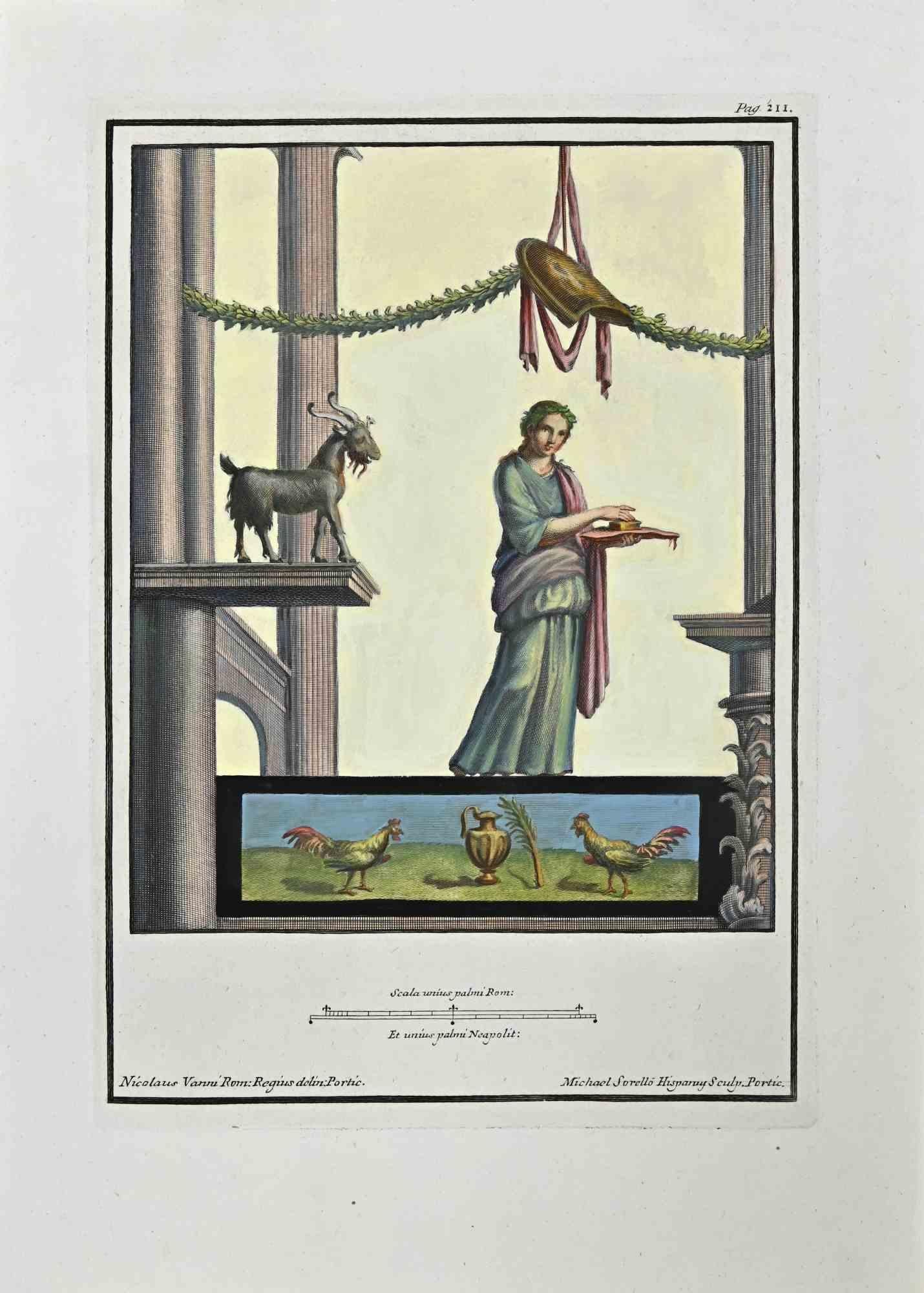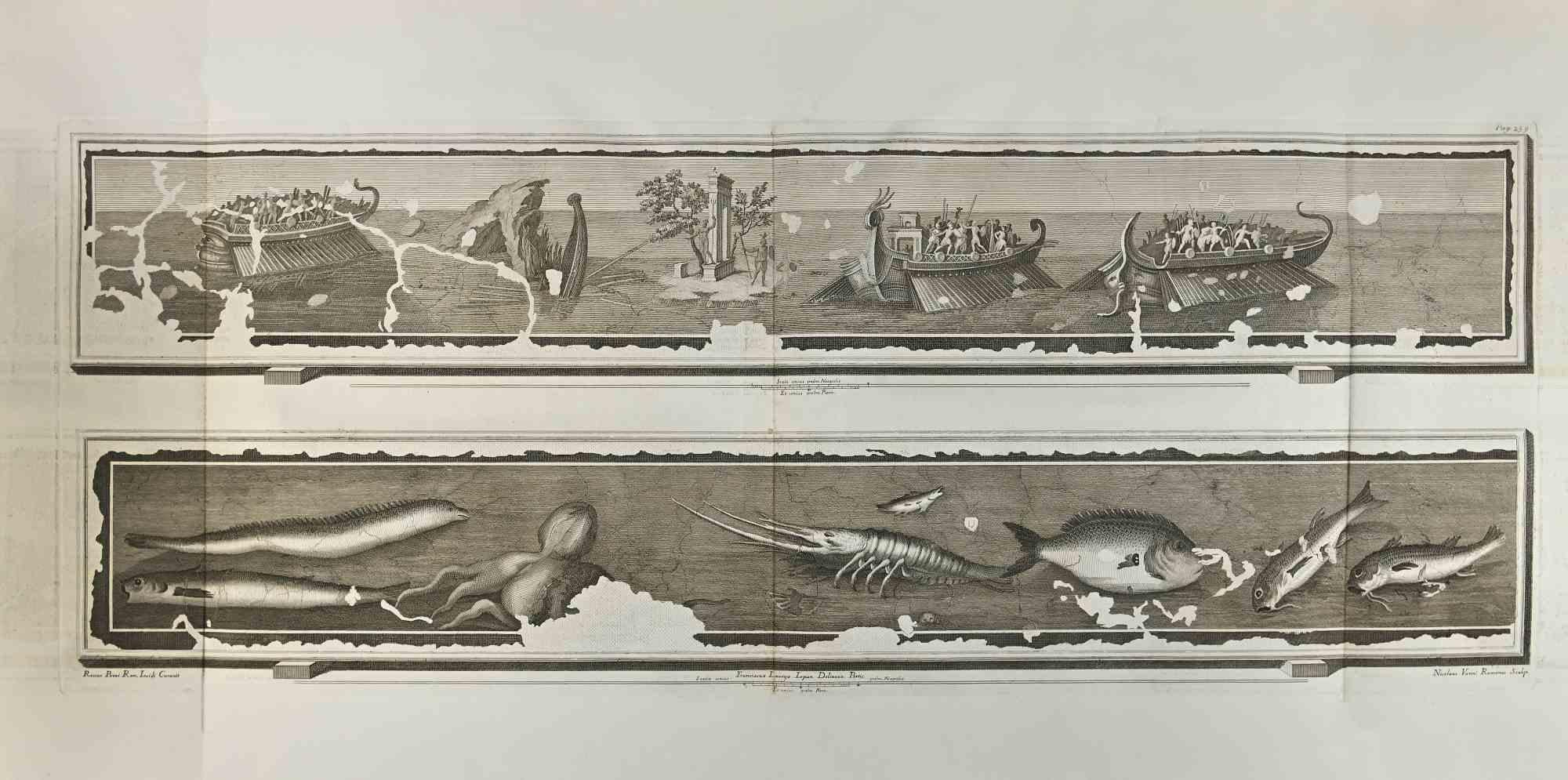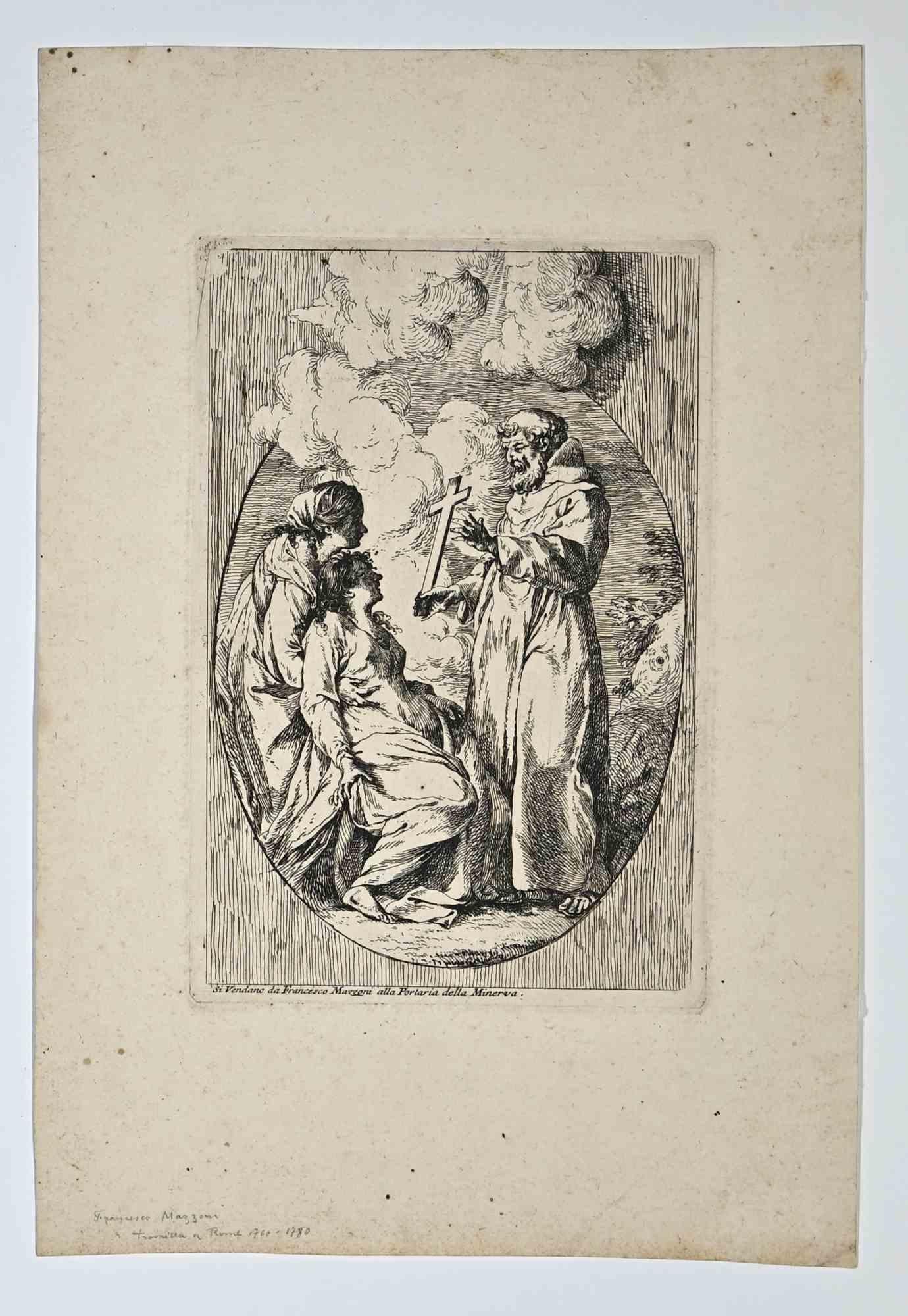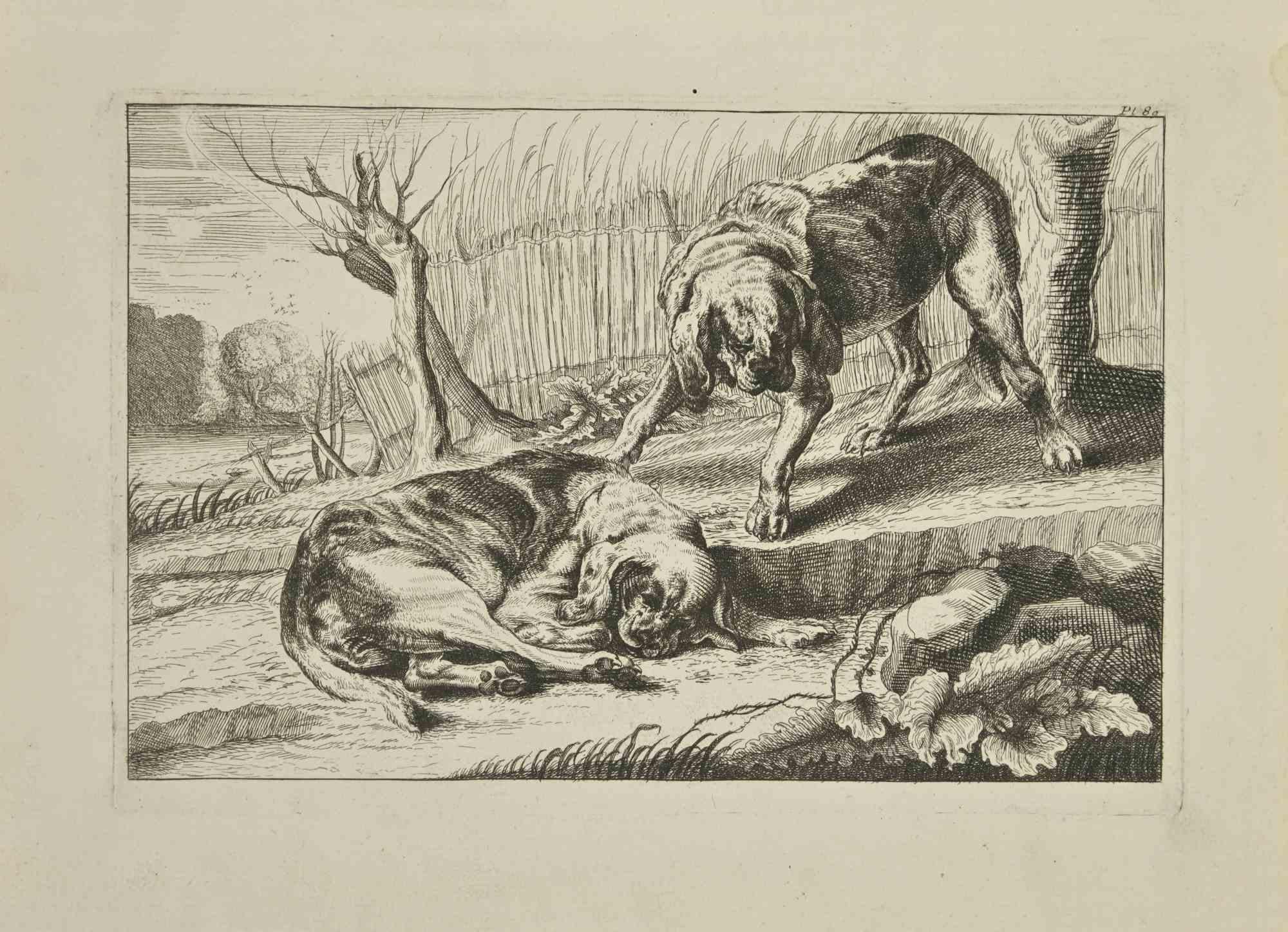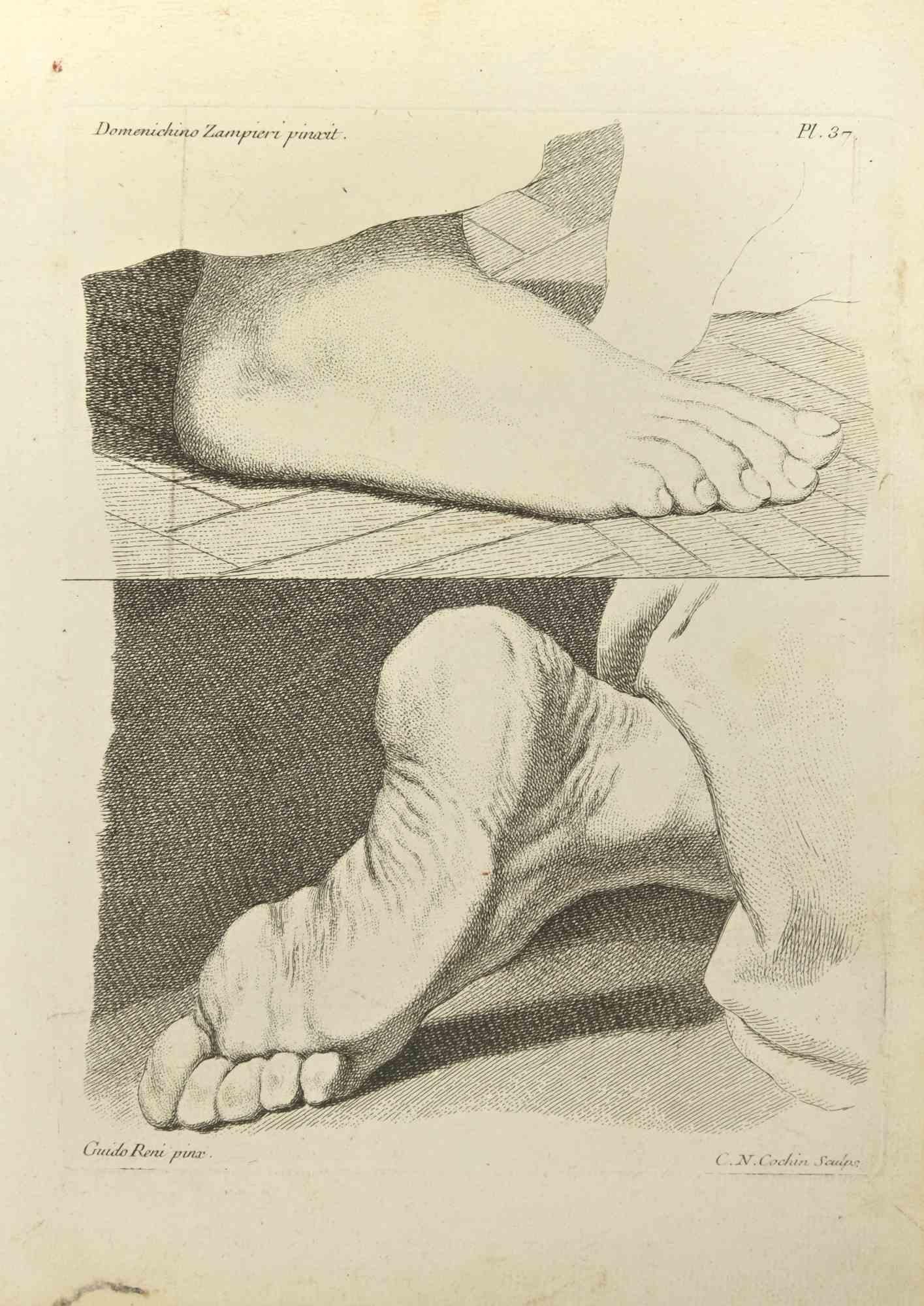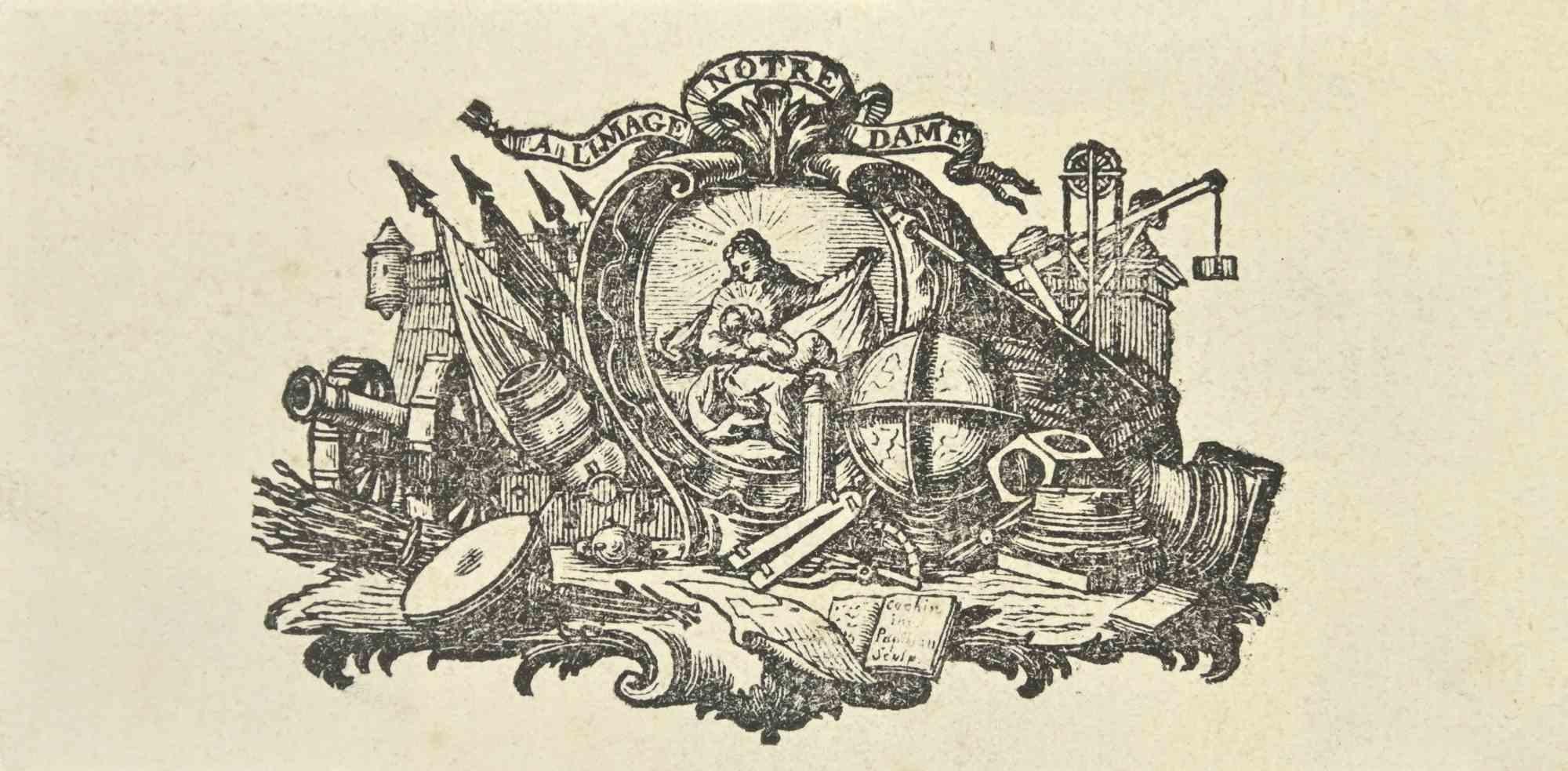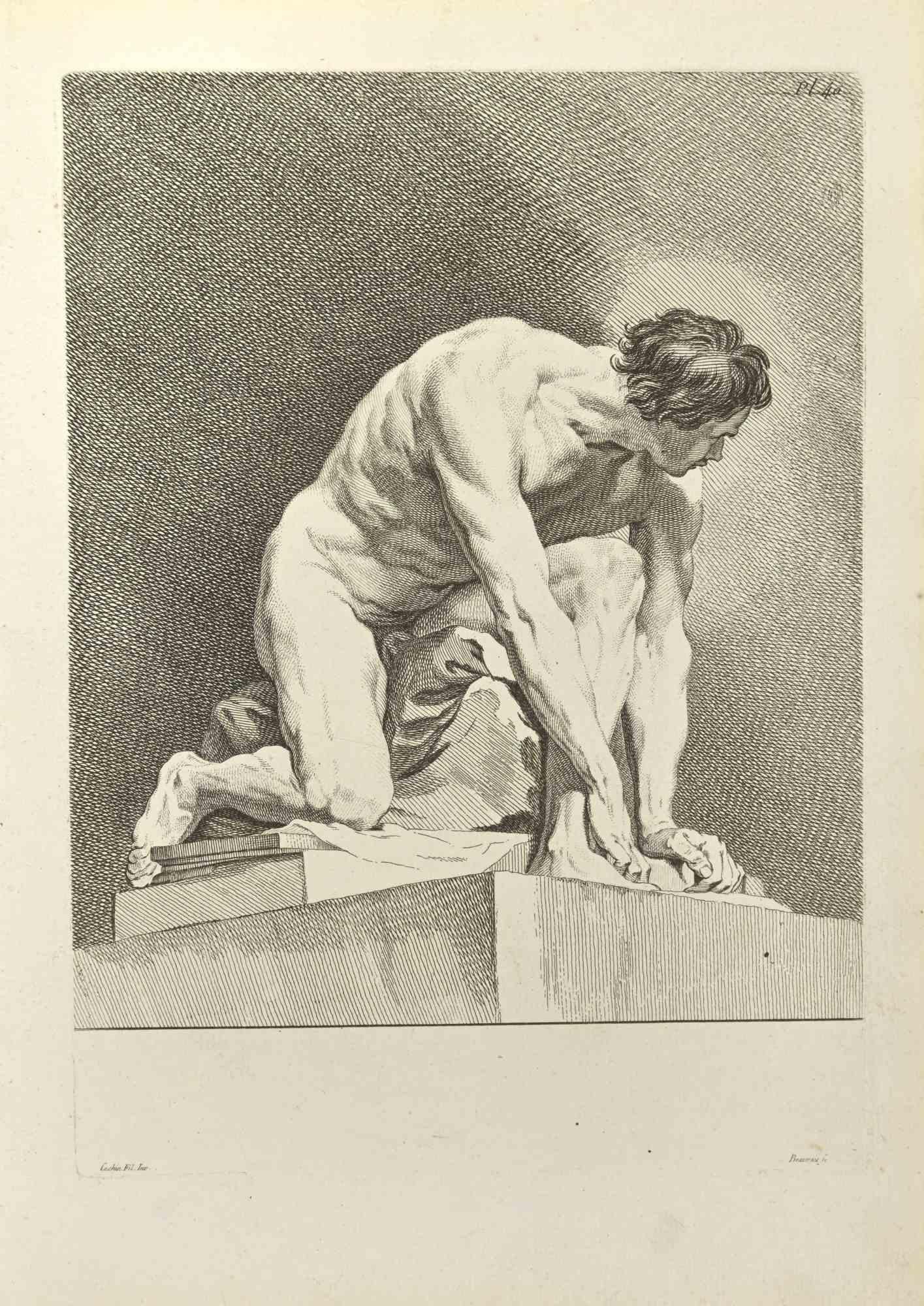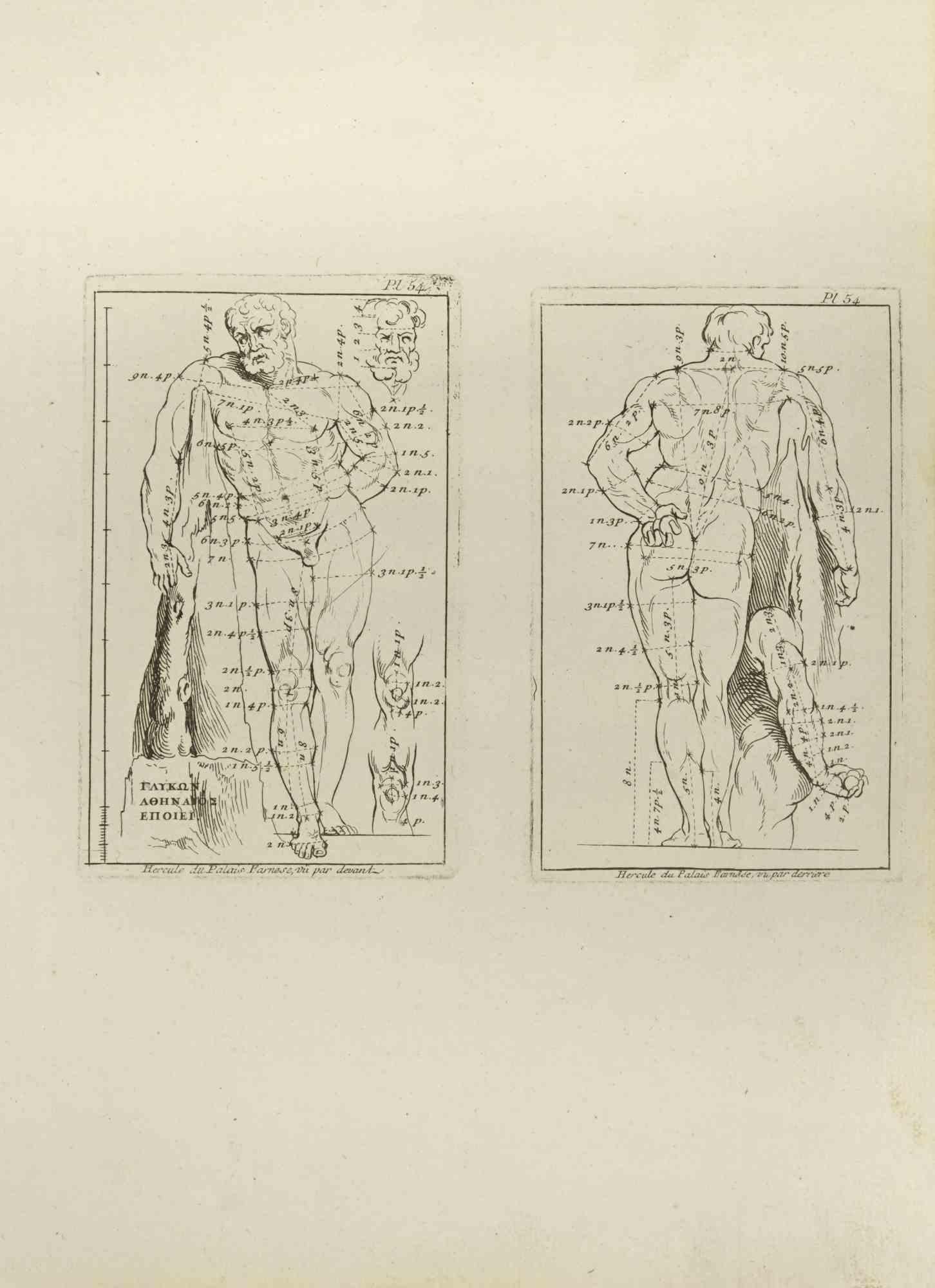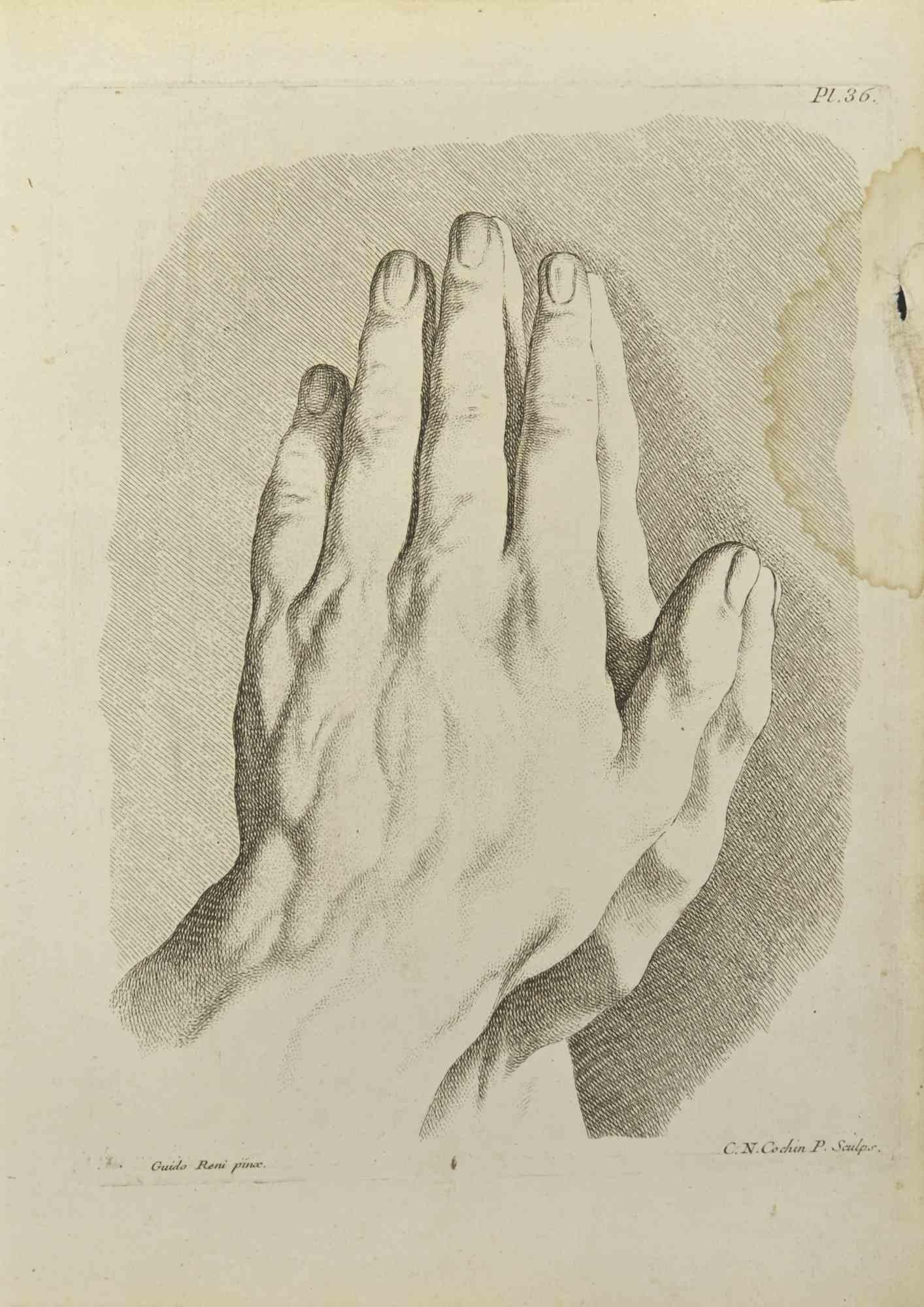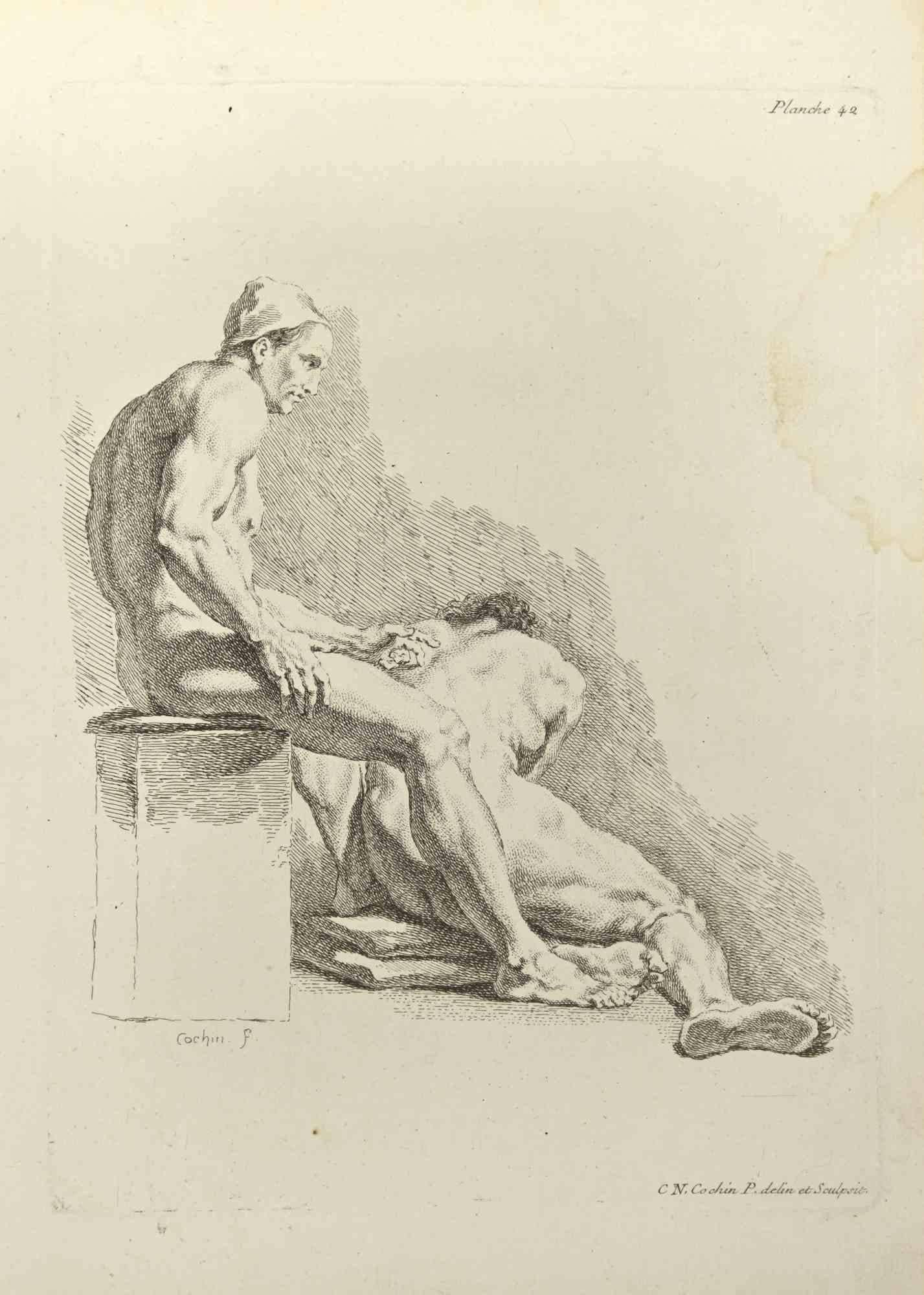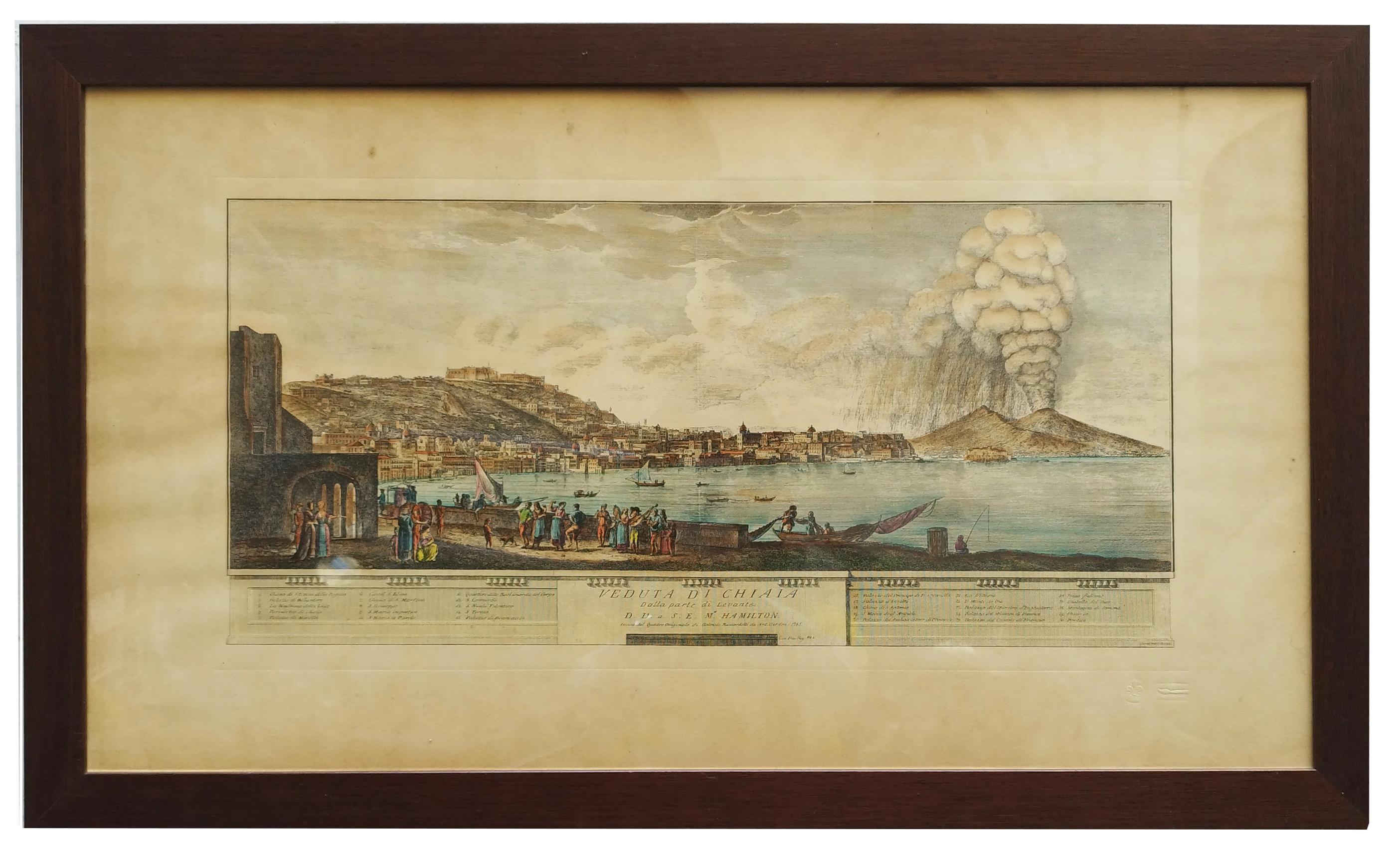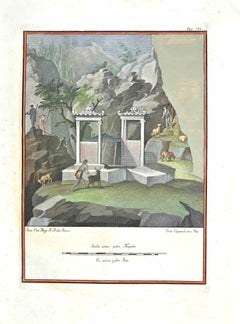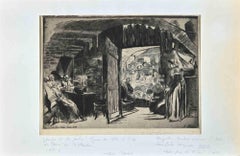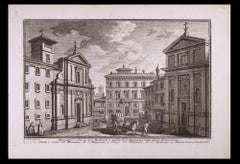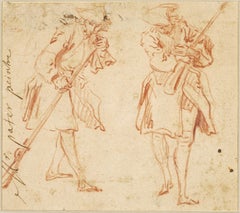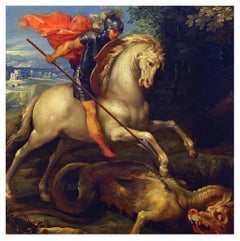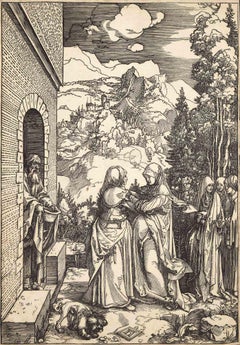
The Visitation - Woodcut print after Albrecht Durer - Early 20th Century
View Similar Items
Want more images or videos?
Request additional images or videos from the seller
1 of 2
Auction endedBrowse Current Auctions
The Visitation - Woodcut print after Albrecht Durer - Early 20th CenturyEarly 20th Century
Early 20th Century
About the Item
- Creation Year:Early 20th Century
- Dimensions:Height: 11.82 in (30 cm)Width: 8.27 in (21 cm)Depth: 0.08 in (2 mm)
- Medium:
- Movement & Style:
- After:Albrecht Dürer (1471-1528, German)
- Period:
- Framing:Framing Options Available
- Condition:Insurance may be requested by customers as additional service, contact us for more information.
- Gallery Location:Roma, IT
- Reference Number:Seller: T-1254421stDibs: LU65039090052
About the Seller
4.9
Platinum Seller
These expertly vetted sellers are 1stDibs' most experienced sellers and are rated highest by our customers.
1stDibs seller since 2017
6,749 sales on 1stDibs
Typical response time: 2 hours
More From This SellerView All
- Ancient Roman Fresco - Original Etching By F. Cepparuli - Mid-18th CenturyBy Francesco CepparuliLocated in Roma, ITFrancesco Cepparuli, Ancient Roman Fresco, original etching hand watercolored. Mid-18th Century. original etching from the end of the 18th century, realized by Francesco Cepparuli. ...Category
Late 18th Century Old Masters Figurative Prints
MaterialsEtching
- Cave Rue de l'Enfer - Original Etching by Augustin André Lançon - 1871Located in Roma, ITCave Rue de l'Enfer is an original Etching realized by Augustin André Lançon in 1871. Rare etching belonging to the suite "Guerre de 1870 et Siège de Paris". Very good Conditions. ...Category
1870s Old Masters Figurative Prints
MaterialsEtching
- Monastero e Chiesa di S. Apollonia-Etching by Giuseppe Vasi-Late 18th CenturyBy Giuseppe VasiLocated in Roma, ITMonastero e Chiesa di S. Apollonia is an original black and white etching of the Late 18th century realized by Giuseppe Vasi. The beautiful etching represents a glimpse of Rome. Si...Category
Late 18th Century Old Masters Figurative Prints
MaterialsEtching
- Giardino e Casino Pontificio - Etching by Giuseppe Vasi - Late 18th CenturyBy Giuseppe VasiLocated in Roma, ITGiardino e Casino Pontificio is an original black and white etching of the Late 18th century realized by Giuseppe Vasi. The beautiful etching represents a glimpse of Rome. Signed ...Category
Late 18th Century Old Masters Figurative Prints
MaterialsEtching
- Archiginnasio della Sapienza - Etching by Giuseppe Vasi - Late 18th CenturyBy Giuseppe VasiLocated in Roma, ITArchiginnasio della Sapienza is an original black and white etching of the Late 18th century realized by Giuseppe Vasi. The beautiful etching represents a glimpse of Rome. Signed ...Category
Late 18th Century Old Masters Figurative Prints
MaterialsEtching
- Fianco della Strada Giulia - Etching by Giuseppe Vasi - Late 18th CenturyBy Giuseppe VasiLocated in Roma, ITFianco della Strada Giulia della Parte del Tevere is an original black and white etching of the Late 18th century realized by Giuseppe Vasi. The beautiful etching represents a glimp...Category
Late 18th Century Old Masters Figurative Prints
MaterialsEtching
You May Also Like
- Pair 17th Century Medical Anatomy Engravings by Francesco ValesioLocated in Rochester, NYTwo anatomical copper engravings by Francesco Valesio. From De humani corporis fabrica libri decem Evangelista Deuchino, On laid paper. 17th Century # nude male figureCategory
17th Century Old Masters Nude Prints
MaterialsLaid Paper
- Two military studies, a preparatory red chalk drawing by Jean-Baptiste PaterBy Jean-Baptiste PaterLocated in PARIS, FRAs Florence Ingersoll-Smouse wrote in 1921 in her book devoted to Jean-Baptiste Pater, "a painter of the Fête galante, Pater is interesting both by his intimacy with Watteau, to whom many of his works are still attributed, and by his own value as an artist.” This sanguine, full of life and spontaneity, is typical of the preparatory studies made by the painter to be used later in the composition of his paintings. 1. Jean-Baptiste Pater, pupil and disciple of Antoine Watteau Antoine Pater, Jean-Baptiste's father, belonged to the petty bourgeoisie of Valenciennes where he worked as a merchant-sculptor. His brother Jacques was a local painter who was probably involved in his nephew's training. Born on December 29, 1695, Jean-Baptiste Pater was first trained with Jean-Baptiste Guider, a local painter whose death in 1711 was probably the reason for Jean-Baptiste’s departure alongside Watteau, who was visiting Valenciennes. Watteau's difficult character led to their separation in 1713. Back in Valenciennes, Jean-Baptiste Pater encountered difficulties with the powerful Corporation of Saint-Luke (to which he refused to belong) which forced him to return to Paris in 1718. He reconciled with Watteau shortly before his death (on July 18th 1721), inherited the commissions that Watteau had been unable to fulfil and completed some of his paintings. Pater was accepted by the Académie Royale in 1725 but did not produce his reception painting The soldier’s revels until three years later. Throughout his brief career (he died at the age of forty on July 25th 1736), he mainly had a clientele of amateurs and received only one royal commission, shortly before his death. 2. Description of the drawing and related artworks Pater had adopted his master Watteau's method of composition. His study drawings were carefully glued in a notebook and were used to animate his compositions. His paintings sometimes suffer from a somewhat artificial composition, since the figures seem to be pasted one next to the other. This point has also been made about Watteau’s. The theme of military scenes (which was at the time included in the genre of Fêtes galantes!) was one of Pater’s favourite subjects. Together with the Bathing Women...Category
1720s Old Masters Figurative Prints
MaterialsChalk
- After Giuseppe Cesari (Italian 1568-1640) St. George Slaying the DragonBy Giuseppe CesariLocated in Sydney, NSWArtist: After Giuseppe Cesari (Italian 1568-1640) Title: St. George Slaying the Dragon Medium: Giclée Fine Art Print on Ilford Galerie Textured Cotton ...Category
16th Century Old Masters Figurative Prints
MaterialsArchival Ink, Rag Paper
- Church of St. Costanza, Rome: An 18th Century Piranesi Architectural EtchingBy Giovanni Battista PiranesiLocated in Alamo, CAThis is a framed 18th century Giovanni Battista Piranesi etching entitled: "Veduta interna del Sepocro di Santa Costanza, fabbricat...Category
1770s Old Masters Interior Prints
MaterialsEtching
- Crucifixion: 18th Century Etching by Conrad Metz after Daniele da VolterraLocated in Alamo, CA"Crucifixion" is an etching and aquatint, printed in brown ink by Conrad M. Metz after a painting by Daniele da Volterra. It was published in London in 1789 in 'Imitations Of Ancient...Category
Late 18th Century Old Masters Figurative Prints
MaterialsEtching, Aquatint
- Fabricius (Ponte Cestio) Bridge : Framed 18th C. Piranesi Architectural EtchingBy Giovanni Battista PiranesiLocated in Alamo, CAThis framed 18th century etching by Giovanni Battista Piranesi is entitled "Dimostransi nella Tav. presente la Pianta, ed Elevazione del Ponte, oggi detto Quattro Capi egli è antichissimo, e chiamavasi Fabrizio da L. Fabrizio Presid. delle Strade, che lo fabbrico' nel fine della Repubblica. "(The Plan and Elevation of the Bridge, today called Quattro Capi. The architect is very ancient, and was called Fabrizio da L. Fabrizio Presid. delle Strade, who built it at the end of the Republic). This is plate 18 in volume 4 of Piranesi's "Le antichita romane opera di Giambatista Piranesi architetto veneziano" (Roman antiquities by Giambatista Piranesi Venetian architect). It was published in Rome in 1756-1757. This etching depicts the plan and elevation of the bridge now called the Ponte dei Quattoro Capi or Ponte Cestio (Bridge of the Four Heads), which in antiquity was called the Bridge of Fabricius after L. Fabricius, the Superintendant of the Streets who built it at the end of the Republic, around 62 BC. It was also been known in the Middle Ages as ‘Ponte Giudeo’ (Bridge of the Jews). The bridge crossed from the left bank or northeast side of the Tiber River to Tiber Island...Category
1750s Old Masters Landscape Prints
MaterialsEtching
Recently Viewed
View AllMore Ways To Browse
The Visitation
Durer Woodcut
Albrecht Durer Woodcuts
Albrecht Durer Woodcut Print
Vintage Jewellery Posters
African Art Sculptures For Sale
Clay Wall Relief
19th Century Ink Well Stand
70s Bed Frame
Gilot Lithograph
Haute Couture Dior 1950s
Medieval Period Sculpture
Georges Braque Bird
Sea Nymphs
Scottish Turner
Signed Meaning In Printmaking
Pablo Picasso Claude Picasso
Mud Man
